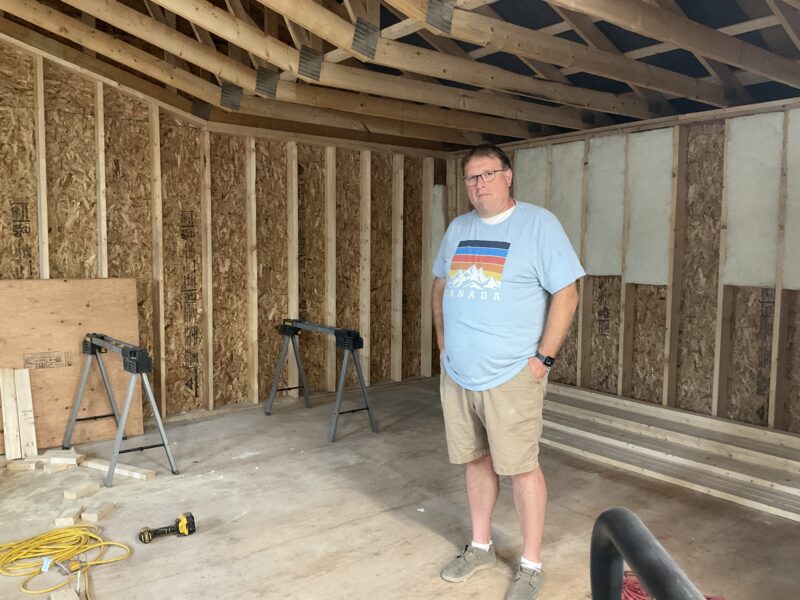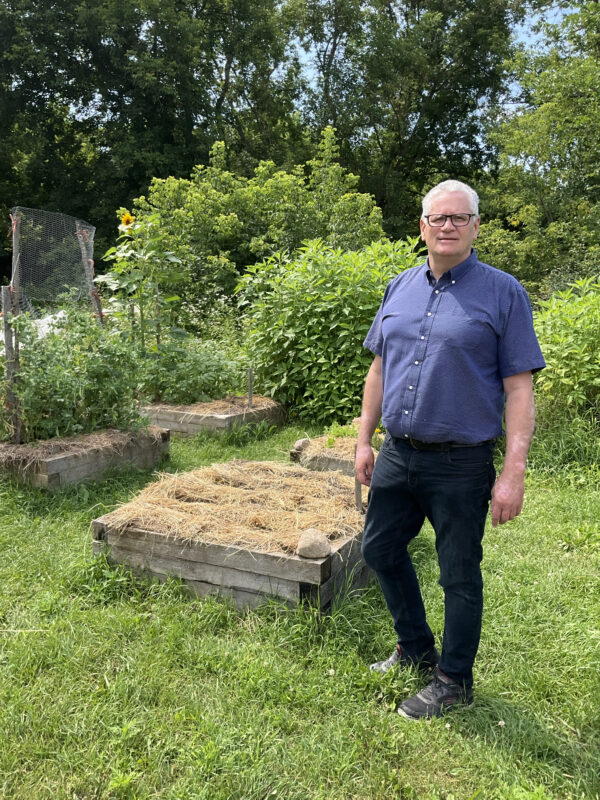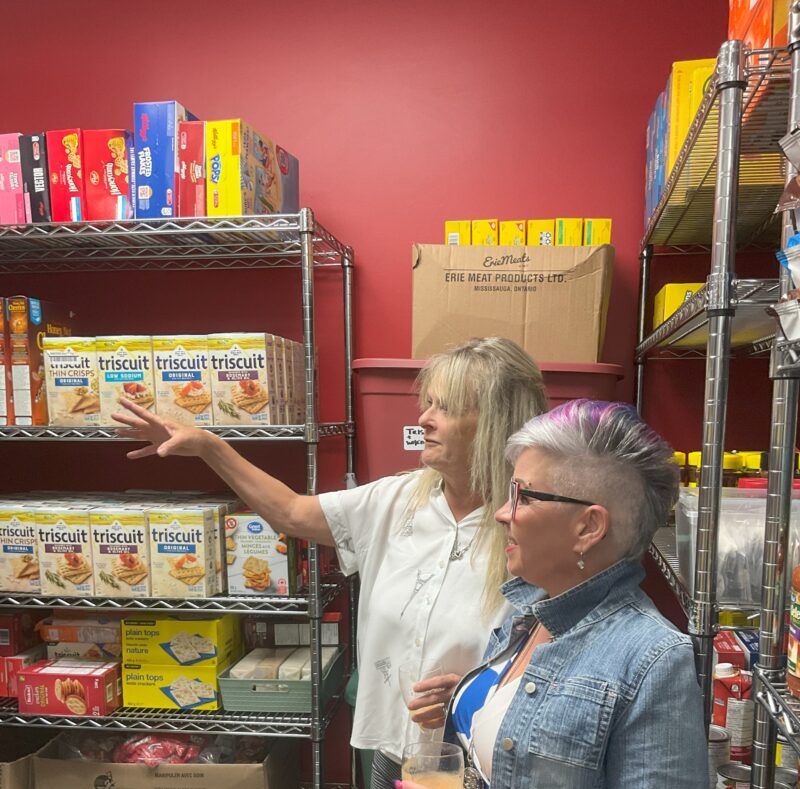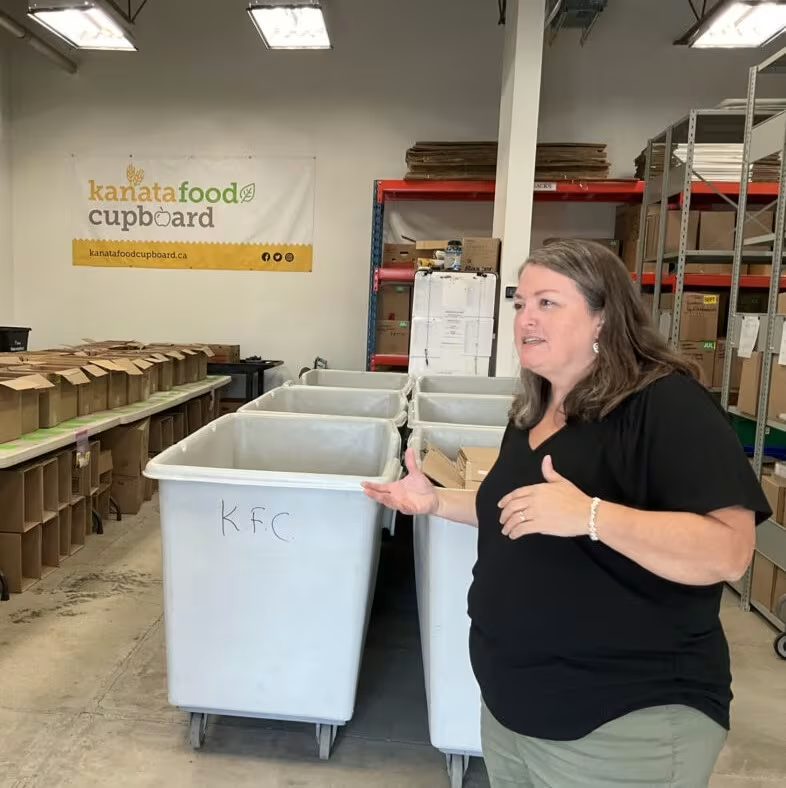Written by Erin Waddington
High on a hill just off Country Road 58 between Pembroke and Barry’s Bay there’s a sign that reads “Heaven.”
I can’t confirm the accuracy of the sign, but the rolling green hills punctuated by the quaint towns and villages that make up Renfrew and Lanark counties, sure are beautiful.
I was here to visit some of the community food banks who make up the Eastern branch of the Feed Ontario network. I hoped to learn more about the challenges they were facing, and if there were any other ways that we could help support their efforts.

Here, tractors amble along the roadways and serve as a large reminder to the vehicles behind them that it’s okay to slow down and enjoy the journey.
The food banks in this region may be removed from the fast-paced lifestyle that exists within an urban nucleus, but just like big cities in our province the numbers of people accessing their services are rising quickly, a stark contrast to the slower-paced rural environment.
As I navigated these roads with intermittent GPS service, I hoped that the recesses of my brain would instinctively lead me in the right direction. After all, this is where I grew up. I was home, and happy to be there, feeling very much like Dorothy when she arrived back in Kansas.
Growing up, I lived where the two rivers meet. We didn’t have a lot, but we always had enough. We lived in a small house in the country. Nutella sandwiches were a lunchtime staple, and I wore clothing from bargain stores in the area.
Before I realized the virtues of thrifting, I remember my mom trying to take me to the local secondhand store and refusing to go in, afraid of who would see me. I chose to stand outside, pretending to wait for a bus that would never come, since there was no public transportation.
In this small town, everyone knew everyone else, and you had to work hard to retain anonymity.
As I drove these country roads, reflecting on the past, I observed my surroundings. It felt like I was in a hall of mirrors that transversed both the past and present.
Hay bales covered in white plastic were reminiscent of giant fluffy marshmallows and dotted the landscape. Cattails could be seen peeking out from ditches announcing one of the many streams and rivers found flowing throughout the region. Countless cows, horses, and other livestock munched contentedly, swishing tails to ward off unwanted pests.
Like wrapping yourself in a cozy quilt, these images were comforting and expected. What was unexpected though, was what I didn’t see during my travels.
Where were the tents heralding the encampments seen now in towns and cities across our province? Where were the folks requesting spare change for a meal?
If these stark reminders of poverty were absent, then who is using these food banks and why has their use been increasing at an alarming rate for the last eight consecutive years? The food banks knew the answers and provided me with insight and anecdotes during my visits, painting a very real and vivid picture of who was turning to them for support.
As we walked around their carefully tended community garden, volunteers at one food bank told me about the many working families who need to visit them as they struggled to make ends meet.

While expertly navigating around carefully organized shelves of canned goods, the ladies who ran a small food bank told me about their senior clientele, whose pensions aren’t keeping up with inflation and were now having to rely on a food bank for the first time.
I heard about the unhoused population who couch surf or make shelters deep in the woods using old trailers or abandoned sugar shacks as I stood in a food bank undergoing renovation. A necessary expansion required to keep up with the ever-growing needs of their community.
Through the food banks I visited on this trip, I learned that yes, the need is here, but it’s hidden, camouflaged like the abundance of wildlife found in the bordering forests.
Visual reminders that we sometimes associate with poverty are starting to make appearances here, but for the most part, the reasons and people who utilize these food banks might not be as apparent to an outsider. They’re nuanced and subtle like the delicate scent of wildflowers.
I understood. These folks were working hard to retain anonymity in towns where everyone knows everyone else.
The 14 food banks I visited understood this too, and are creating comfortable, dignified, low-barrier services for those that need their support but are sometimes too afraid to ask.
The food banks here have adapted to the local needs of their communities and are as unique as the Ottawa Valley twang heard in the local dialect.
Some are providing delivery services which allow for discreet access to those that are unable to come to the food bank in person.
Others provide curbside pick-up, or drive-through models which expedite service and have visitors in and out in a timely manner.
Pager systems allow patrons to relax in the comfort of their vehicles while they wait for their shopping appointments.
Integrated community programming and events are thoughtfully planned to allow for anyone to visit the food bank, to take part, to belong.
Each of the food banks I visited hoped to normalize their visitors’ experience and to provide assurance that we all need a little bit of help sometimes.
They do this through encouragement, kind words, and validation that it’s okay to use a food bank if you need one. They let you know, it’s okay to be seen.

If you’re interested in finding out more about how Feed Ontario supports food banks in communities throughout the province, sign up for our newsletter.
